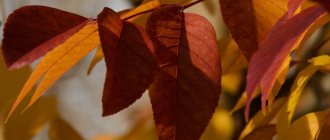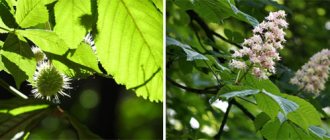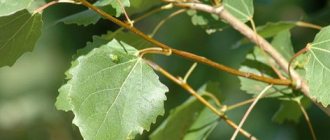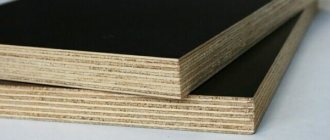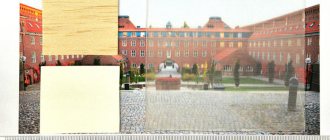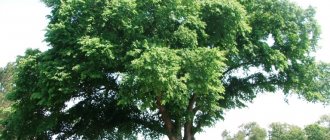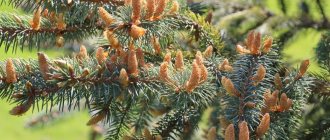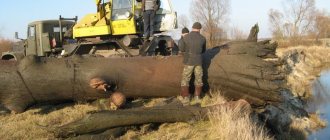Poplars are excellent for planting in urban areas and park areas. They develop quickly, reproduce quite easily, have a beautiful appearance, and some varieties have healing properties.
Black poplar belongs to the willow family. It grows in Europe, Asia and North Africa. In Russia it is also known as sedge. This tree grows in flat areas and on river banks. Black poplar grows best in black soil.
In the wild it is found both alone and among other types of trees. Sedum grows together with birches, willows and poplars of other species. It takes root well in any weather conditions, calmly withstanding the negative influences of the external environment.
Botanical description of black poplar
This tree belongs to the Willow family. It belongs to the so-called trees of the first size - this means that it grows to the upper tier. Mature poplars reach up to 35 meters. Moreover, the diameter of their trunk is from 1.5 to 2 meters, so it will not be possible to grasp it alone.
The root system of the plant is very developed: the poplar easily holds even during strong hurricanes, and fallen trees are extremely rare. It is interesting that when the lower part of the trunk is covered with sand, it produces numerous layerings - the second tier.
The trunk is most often straight, and the crown is spreading, spherical. Poplar has simple leaves of regular, expanded shape (up to 10 cm long, up to 8 cm wide). The leaf has regular veining and the color is forest shades of green. The plant is dioecious and produces both male and female earrings (they differ in size - the male ones are larger). It produces a fruit in the form of a dry two-leaf capsule, each of which contains 12 seeds.
Collection dates and methods
The buds are collected during the initial flowering period of black poplar. At this time they are quite dense, hard and sticky from the fragrant resin covering them. They are collected by hand, breaking them off from the branches, and then immediately dried. It is recommended to dry the buds in dryers at a temperature of 30-35 ° C, but good raw materials are also obtained by drying them outdoors in the shade.
Bark is removed only from very old poplar trees. It is easily separated from the wood. The removed bark is well cleaned from the upper dirty grayish layer (from the primary bark) and from crushed and weedy parts. The longer and thicker the pieces of bark, the more valuable they are.
Basic requirements for the quality of raw materials
The finished raw material must consist of whole, undamaged poplar leaf buds. They are oblong-ovate, naked, pointed, shiny and sticky, covered on the outside with imbricated scales; about 1.5-2 cm long, 4-6 mm in diameter. The color of the buds should be greenish or brownish-yellow; the taste is bitter; the smell is resinous-balsamic, peculiar; humidity - no more than 12%.
Bark. The finished bark should consist of pieces on the upper side, cleared of the outer dirty grayish layer, with small longitudinal, more or less deep cracks and slit-like depressions, rounded-triangular in cross-section. Color light reddish-brown; length of pieces 15-40 cm, thickness 2.5-5 cm, width 3-8 cm.
Where does black poplar grow?
Osokor is widespread across the Eurasian continent: it grows everywhere in Europe, in Siberia it reaches the Krasnoyarsk Territory; in Asia - the eastern regions of Kazakhstan, the western regions of China, throughout Central Asia, Turkey and Iran.
In our country, black poplar grows mainly in the European part, namely in the black soil regions. You can find group clusters, as well as single standing trees. Sedge takes root especially well in the valleys of large rivers - then it is especially easy for its powerful and numerous roots to obtain moisture. Trees prefer only plains - they are practically not found in mountainous areas.
In artificial plantings, seed propagation is used at first, after which offspring are used: 1 poplar can produce up to 200 children.
THIS IS INTERESTING
Black poplar has a short lifespan - 60-75 years. For example, birch lives 2 times longer. At the same time, the poplar manages to provide 2 times more oxygen than most trees in the same period. Thanks to this, it brings great benefits to cities with unfavorable environmental conditions.
Bark Recipes
You can purchase ready-made dried sedge bark in the pharmacy chain. These raw materials are offered by online stores. The average price of a 100 g package is 100 rubles. For 250 g you need to pay 155 rubles.
Decoction
Dried small fragments of poplar bark - 30 g - are poured into an enamel bowl. Boil for seven minutes at medium heat in 200 ml of water. After cooling, the broth is drained through a sieve. 30 ml is consumed every eight hours.
Article for you:
Medicinal properties of rowan bark and use in folk medicine
It has a hemostatic and antimalarial effect. Recommended for use for gout and sciatica. Relieves the condition of rheumatism and intermittent fever.
Infusion
Crushed dried poplar bark raw material - 5 g should be placed in a heat-resistant container and brewed with boiling water, pouring in 600 ml.
Let stand, covering the container with a towel, until it cools. The infusion, filtered through a gauze cloth, is divided in half, drinking in small sips over two days.
This infusion helps eliminate diarrhea and bloating. It is recommended to take it in order to normalize digestive processes and get rid of flatulence.
Tincture
Measure out 20 g of dried crushed sedge bark and pour it into a darkened bottle into which 200 ml of alcohol is poured.
Under a sealed stopper, the vessel is kept for 10 days in a dark cabinet with daily shaking of the contents. In filtered form, the tincture is taken every eight hours, 10 drops, dissolving them in 50 ml of water.
This remedy serves as the basis for compresses that relieve inflammation and pain in joint lesions, rheumatism, and gout.
Another name for black poplar
The most common other name for poplar is sedge. Related to this word are rusk, yasokir, sokora, sokorina, white leaf, and silver poplar. In Dahl's dictionary the names passport tree, Vistula poplar, paradise tree, fragrant poplar and simply black poplar are found.
This abundance of names is associated with different dialects and languages. Often the names of the tree are associated with the areas where it grows, as well as with the specific names of the researchers who described this plant.
As for the main name - sedge, the most common version says that it is associated with the appearance of the bark, which resembles aspen.
Contraindications
Analyzing the contraindications of medicinal products made from sedge bark, we can conclude that they should not be taken during pregnancy, as well as during breastfeeding.
Do not give to children under five years of age. Do not use for individual intolerance, hepatic, renal, or complicated cardiac failure.
Properly prepared medicinal compositions using poplar bark as the main component can help in the treatment of a number of diseases. The main condition for avoiding harm to health is obtaining medical advice and following the recommendations reflected in the selected recipe.
It must be borne in mind that alternative treatment must be safe, therefore, if nausea, weakness, or dizziness occurs, stop taking any medications immediately.
Medicinal and beneficial properties of black poplar
Interestingly, the familiar poplar has long been widely used in a variety of fields:
- In medicine – both folk and professional. Leaf buds, bark and leaves of the tree are used. They act as an analgesic, diuretic and have great healing potential.
- Black poplar is perfect for our climate because it has high winter hardiness. Thanks to this quality, the tree is widely planted in city gardens, parks, and recreation areas. The beautiful, slender shape creates a very pleasant look for alleys and park paths.
- Poplar plantings are carried out in order to protect forests from winds, as well as soil from destruction by moisture and gusts of wind. Trees are especially often planted along river banks, in ravines and along roads.
- Fuelwood serves as an excellent building material and is also used in the production of paper, rayon, plywood, furniture and many other products.
THIS IS INTERESTING
For many centuries, shields for warriors were made from sedge. Wood was optimally suited for these purposes, since it has not only mechanical strength, but also sufficient flexibility.
Preparation and storage
The most suitable period for harvesting sedge bark is early spring. It is recommended to select plots after sanitary felling, remote from industrial zones and highways.
The bark is collected from large branches, trying to remove it down to the wood along with the inner layer. They sort through the raw materials, removing fragments affected by rot or pests.
Cut into plates 5-7 cm long and lay out in one layer in a warm room, ensuring good ventilation. The raw materials are turned over daily.
The dried pieces are placed in cardboard boxes. Can be poured into canvas bags. For storage, select a dry cabinet or shelf in the pantry, not forgetting to regularly ventilate. The healing properties of poplar bark last up to three years.
Why are black poplar buds valued?
Sedge buds are especially valued in medicine. The reason is their exceptionally rich chemical composition:
- essential oils;
- glycosides;
- tannins;
- organic acids;
- fixed oils.
Thanks to these components, poplar buds have a complex healing effect on the entire body:
- diuretic;
- anti-inflammatory;
- antipyretic;
- antirheumatic;
- expectorant.
The buds are steamed in water and alcohol tinctures are made from them. They are also used in the form of ointments. They help not only in treating diseases (osteochondrosis, arthritis, hemorrhoids, etc.), but also serve as an excellent means of strengthening hair.
Useful Features
The benefits of poplar bark are due to its inclusion of flavonoids, higher hydrocarbons, and salicin. Contains alkaloids that provide a sedative effect, tannins. Medicinal properties:
- painkillers;
- sweatshops;
- antibacterial;
- tonic;
- hemostatic;
- diuretics;
- expectorants;
- anti-inflammatory;
- vasodilators;
- antipyretics;
- astringents;
- wound healing.
Indications:
- cold;
- gout;
- pathologies of the urinary system;
- rheumatism;
- intermittent fever;
- neuralgia;
- diarrhea;
- malaria;
- helminthic infestation;
- diabetes;
- prostatitis;
- arthritis;
- flatulence;
- sciatica;
- cystitis.
Dosage forms based on poplar bark are used at home for external treatment of the skin. They accelerate the healing of burns, scratches, wounds, promote the removal of pus, and intensify tissue regeneration. Allows to reduce infectious lesions, eliminate rashes and educational lesions.
Internal use of compositions from poplar bark strengthens the immune system, reduces temperature, and provides prevention against infectious and cold pathologies.
Due to its diuretic characteristics, this raw material is recommended for use in order to normalize the water-salt balance. With its help, the degree of salt deposition in joints is reduced.
Poplar bark has a beneficial effect on the functions of the gastrointestinal tract, strengthens the nervous system, eliminates insomnia, normalizes sleep, and relieves joint inflammation.
Traditional medicine recipes with black poplar
Preparations based on poplar leaves and buds can be purchased at the pharmacy. If possible, you can prepare raw materials and make medicines based on them yourself.
At a temperature
Poplar buds are an excellent antipyretic. At temperature, take 2 large spoons of kidneys, pour a glass of boiling water and infuse for 3 hours. The decoction is taken as an emergency remedy, a quarter glass (until complete recovery).
Diuretic
Take 5 tablespoons of dry poplar leaves and add a liter of boiling water. You need to insist from 5 hours to the whole night. Then strain and take half a glass before each meal (but no more than 3 times a day). Therapy lasts 10 days, then a break for 4 days, then the course again until complete recovery.
Diarrhea Remedy
Take 2 large spoons of dried tree bark, pour in a large glass of boiling water and cook at low boil for 5-10 minutes. Then the mixture is infused until it cools completely and taken a tablespoon (it can be diluted in a glass of boiled water) before each meal until complete recovery.
To restore the heart muscle
To strengthen the myocardium, especially against the background of a heart attack, you can use a decoction of a tablespoon of leaves (per glass of boiling water). Boil over low heat for 10-15 minutes, then leave until completely cooled and consume a teaspoon before each meal for a month.
For headaches
If it is possible to collect poplar flowers, they can also be used: 2 teaspoons of dried raw materials are brewed with two glasses of hot water and infused for 20-30 minutes. The resulting remedy is drunk in 2 doses: first, a third of the total amount, and after half an hour - the rest. Relief will come literally in 15 minutes.
Ointment for skin lesions
Take 3 large spoons of dry buds, which must be thoroughly crushed in a mortar. A tablespoon of melted butter is added to the mixture and everything is thoroughly mixed. They are treated with ointment, spreading it on the areas affected by ulcers or ulcers. Used for scratches and abrasions. The product can be stored in the refrigerator for no more than 3 weeks.
Application in cosmetology
The medicinal properties and contraindications of poplar buds are important in home cosmetology. Natural raw materials help cope with inflammation, eliminate pimples and blackheads, tighten the epidermis and allow you to maintain youth longer. Poplar oil and infusion are used to strengthen hair and normalize oily scalp.
For sensitive skin prone to irritation, you can prepare the following mask:
- dry buds of the plant are ground into powder;
- mix a large spoon of raw material with equal amounts of lanolin;
- spread the composition over the face for 20 minutes, after which it is removed with warm water.
If you use the product at least twice a week, the skin will quickly cleanse and become more elastic.
Black poplar helps strengthen curls and make them a little darker if they are naturally light. For soft coloring, prepare a simple infusion:
- 30 g of buds and leaves are poured into 300 ml of boiling water;
- boil over low heat for ten minutes;
- stand until cool and strain through cheesecloth.
You need to thoroughly moisten your hair with poplar infusion three times a day. The product will not bring the same effect as store-bought dye, but it will help to slightly change the shade of your curls.
How to grow, store and collect
Raw materials are collected away from roads, industrial enterprises, and in an environmentally friendly area. The buds and bark are collected at the beginning of flowering, the leaves are harvested after flowering. Raw materials are dried in ovens, electric dryers, in the shade under a canopy, in attics. Store in cardboard or paper bags.
Tell us about your experience in treating black poplar raw materials, share your recommendations, recipes and comments.
